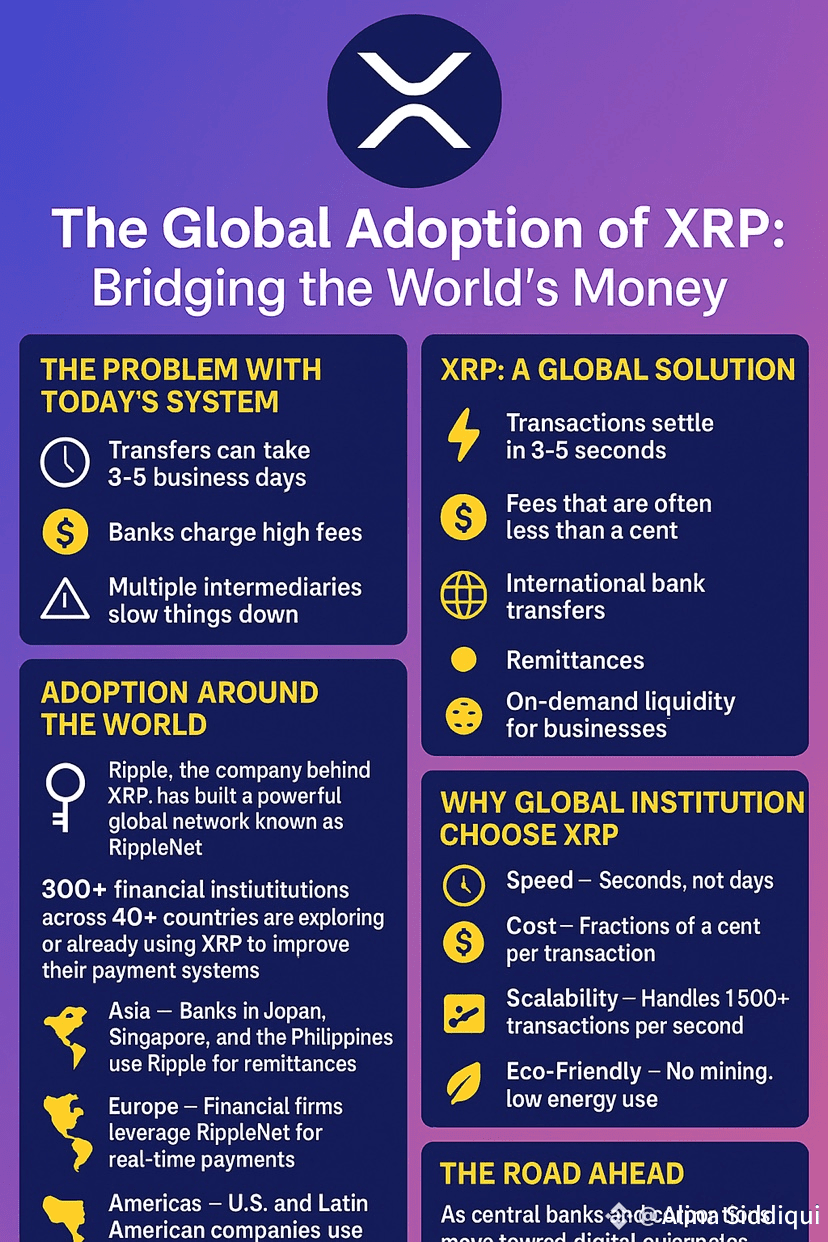When we talk about cryptocurrency adoption, most people think of everyday payments or investments. But XRP is playing a much bigger game—it’s quietly positioning itself as the global bridge currency for cross-border payments.
💱 The Problem with Today’s System
Sending money across borders is slow, costly, and outdated.
Transfers can take 3–5 business days
Banks charge high fees
Multiple intermediaries slow things down
This system hasn’t changed in decades. That’s where XRP steps in.
⚡ XRP: A Global Solution
XRP was designed to move money as quickly as information travels on the internet. Transactions settle in 3–5 seconds with fees that are often less than a cent. This makes it perfect for:
International bank transfers
Remittances
On-demand liquidity for businesses

🌍 Adoption Around the World
Ripple, the company behind XRP, has built a powerful global network known as RippleNet. Through this, 300+ financial institutions across 40+ countries are exploring or already using XRP to improve their payment systems.
Asia → Banks in Japan, Singapore, and the Philippines use Ripple for remittances.
Europe → Financial firms leverage RippleNet for real-time payments.
Middle East & Africa → Ripple helps connect corridors where banking access is limited.
Americas → U.S. and Latin American companies use XRP for cross-border trade.
This is not just adoption—it’s integration into the world’s financial infrastructure.
🔑 Why Global Institutions Choose XRP
Speed → Seconds, not days.
Cost → Fractions of a cent per transaction.
Scalability → Handles 1,500+ transactions per second.
Eco-Friendly → No mining, low energy use.
🚀 The Road Ahead
As central banks and corporations move toward digital currencies, XRP is already positioned as a bridge asset—a neutral currency that connects fiat, stablecoins, and CBDCs.
The global adoption of XRP isn’t about hype—it’s about real-world use cases that reshape the financial system.
🔥 Final Thought:
XRP is no longer just another crypto. It’s becoming the backbone of a new global payments era, connecting economies and people across every continent.
